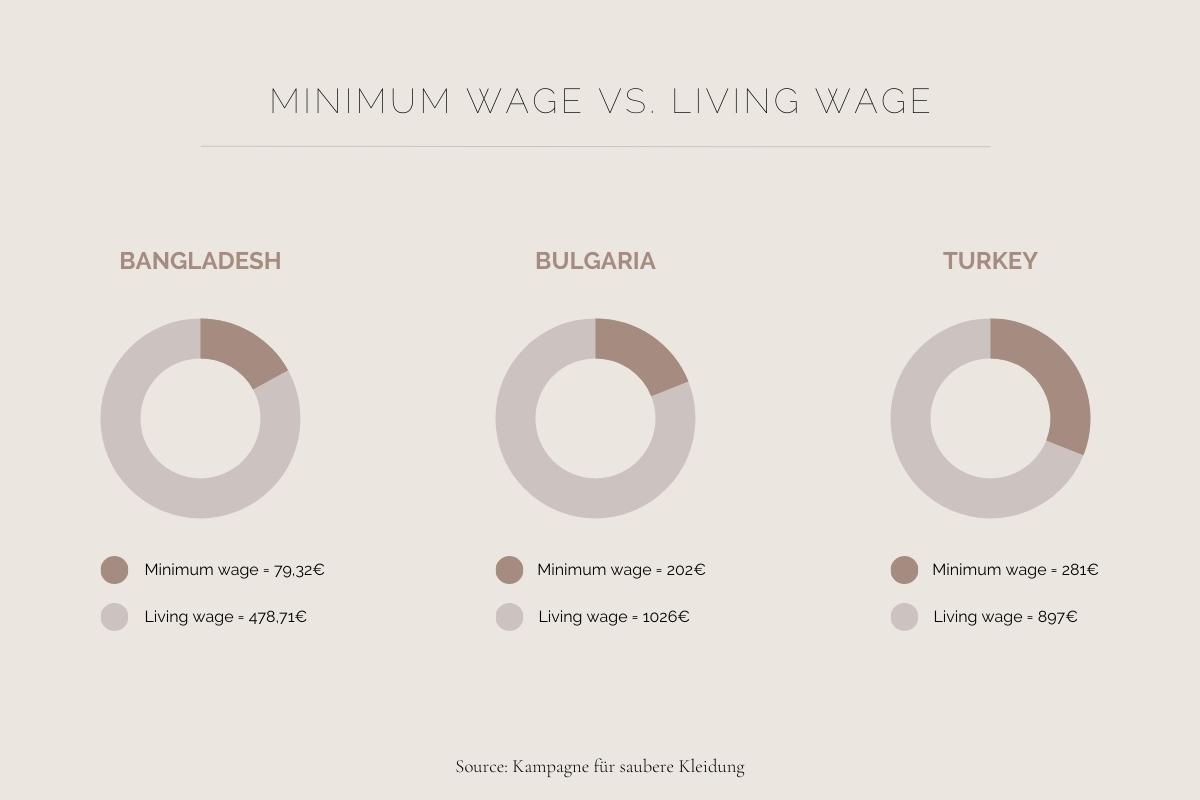Fast fashion and the dirty industry behind it raise many different issues affecting our environment as well as the women along the supply chains. With March 8th marking the International Women’s Day, let’s take a closer look on how and why fashion and feminism are linked.
Fashion as a statement of solidarity
For many of us, the way we dress is part of our identity. We’re able to use fashion to express our values and beliefs. Political statements on our sweaters or shirts can implicate a sense of unity, belonging and even solidarity. At most this is a great way to spark necessary discussions and encourage us and others to rethink.
Unfortunately this form of activism is rather passive. Wearing rebellious statement shirts won’t turn us into dedicated feminists, fighting for equal rights and actively fixing issues at place. Especially while taking a closer look at the working conditions and hierarchies prevalent in the fashion industry, slogans like ‚girl power‘, ‚the future is female‘ or ‚feminist‘ printed on Shirts and sweaters of big fashion companies seem rather cynical. Despite feminist slogans the fashion industry isn’t doing much in supporting women and their rights.
An industry built on exploitation
On April 24th, 2013 the Rana Plaza building, a large textile factory in Bangladesh, collapsed. More than 1.100 people died and another 2.500 were injured, making it the fourth largest industrial disaster in history. Most victims were young women. The accident ferociously revealed how terrible working conditions in the fashion industry actually are. Although there have been some positive changes since then, human rights abuses and environmental degradation remain rife.
80% of the people working in the fashion industry are women, most of them earning less than men working the same jobs. Low wages, overtime, discrimination, verbal and physical abuse – in the fashion industry there’s no room for women’s rights. If you’re living from paycheck to paycheck, trying to feed a family with far too low wages, it’s impossible to just quit the job and escape the exploitation.
Minimum vage vs. living wage
In order to meet the basic daily needs of garment workers such as food, living, health care or education, the determined minimum wage in the manufacturing countries is not nearly enough. However, living wages would provide this standard of living to these people and their families. This actually is considered a human right by the United Nations.

The reality looks rather different unfortunately. While some countries don’t even provide a minimum wage in the first place, it stays way below the living wage in other countries. And this gap keeps on growing. The countries of production don’t even have any reason to raise their wages, as they would risk that fashion companies would just relocate their production to a different, cheaper location.
Supply Chain Act and the need for transparency
The new European Supply Chain Act aims to solve this problem. From 2023 companies must report on their activities and will be held accountable for human rights violations as well as environmental damages along their supply chain. Since this act only applies to companies with more than 250 employees and 40 million euro in sales in the garment industry, its impact remains questionable.
In reality this bill would only affect one percent of all the companies in the EU. Many damaging business practices would be ignored and remain intact.
Fast fashion issues and how to fight them
What does all of this mean for us? Fast fashion is everywhere and the production conditions of many brands are rarely ever truly transparent. But, if we want to empower women and fight for equal rights on the entire planet, we have to question and reflect on our consumerism: Buy less, choose well!
There is no other way than asking ‚who made my clothes‘ and closely paying attention to how these clothes are produced. Furthermore we need to stop supporting companies, that put their profits above human rights and the protection of our environment, by buying their unsustainable fashion. Even if we’re not the ones paying the full price of our garments, somebody else has to.
Slow fashion movement – a sustainable solution
Slow fashion doesn’t mean that we have to forget about style entirely. If we start consuming more mindful and thereby slower and less, we’re actually taking responsibility for other people and our planet. Aside from high-quality vintage and trendy second hand fashion, sustainable and fair producing brands are the answer to a fashion industry defined by wastefulness and exploitation.
After all, ditching fast fashion is not only a statement for sustainability. It is an act of feminism, advocating women’s and therefore equal rights.
Sources:
Frauen in der Bekleidungsindustrie – Fashion Checker
Why do we need a fashion revolution? – Fashion Revolution
Was ist ein Existenzsichernder Lohn – Fashion Checker
EU-Lieferkettengesetz – Fashion Changers

Pingback: Slow Fashion Guide: How to Find Sustainable Fashion ins Los Angeles